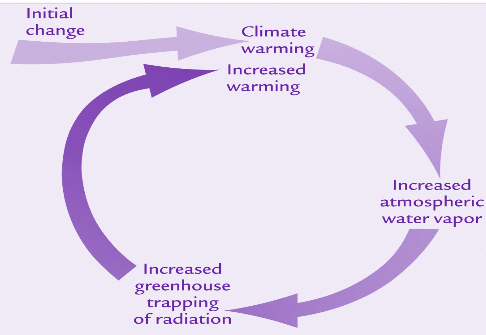



































| INTRODUCTION |
| DOOMSDAY CLOCK |
| OUR GOALS |
| OUR CREDO: SIMPLIFY |
| ALLEVIATE GLOBAL WARMING |
| ARTIFICIAL PRECIPITATION |
| FOOD PRODUCTION |
| BASIC SANITATION |
| AIR POLLUTION |
| ENERGY TRANSITION |
| GREENHOUSE GASES |
| CO2 DIRECT MEASUREMENTS: 2005-PRESENT |
| CARBON DIOXIDE, HISTORIC |
| EARTH’S NATURAL GREENHOUSE EFFECT |
| GREENHOUSE GASES |
| CO2 DIRECT MEASUREMENTS: 2005-PRESENT |
| CARBON DIOXIDE, HISTORIC |
| THE CHANGING OF EARTHS NATURAL GREENHOUSE |
| CO2 STICKS AROUND |
| EARTH’S GREENHOUSE EFFECT BECOMES TOO STRONG |
| TROPOSPHERIC CONVECTION |
| ATMOSPHERIC INVERSION LAYERS |
| THE IMPORTANCE OF ATMOSPHERIC CONVECTION |
| SOLUTION PROVIDED BY AVE TECHNOLOGY |
| RELATION OF CONVECTION TO CLIMATE CHANGE |
| THE NEED FOR AN ATMOSPHERIC VORTEX ENGINE (AVE) : ‘FIRST AID’ |
| WHAT IS THE URBAN HEAT ISLAND? |
| CONSIDERATIONS |
| ENVIRONMENTAL CAUSE PREMATURE MORTALITY |
| THE ATMOSPHERIC BROWN CLOUD. |
| HISTORY |
| OCCURRENCE |
| SOURCE OF POLLUTION |
| DIMMING 6% ! |
| LESS AGRICULTURAL PRODUCTION |
| A THREAT TO HUMAN HEALTH |
| WHAT IS THE URBAN HEAT ISLAND? |
| CONSIDERATIONS |
| SIGNIFICANT MASS LOSS ANTARCTIC ICE |
| ARTIC SEA ICE |
| ANTARCTICA MASS VARIATION SINCE 2002 |
| ALBEDO SIMPLIFIED |
| REFLECTIVENESS |
| NOTICING |
| THE OTHER CARBON DIOXIDE PROBLEM |
| UNPRECEDENTED RATE OF ACIDIFICATION |
| FOOD WEB AND ECOSYSTEM |
| What is already happening? |
| SMOG |
| HEALT AND AIRPOLLUTON |
| PHOTOCHEMICAL lSMOG |
| VOLATILE ORGANIC COMPOUNDS |
| AIR POLLUTION |
| MAIN POLLUTANTS |
| WHAT IS THE URBAN HEAT ISLAND? |
| WHAT IS THE URBAN HEAT ISLAND? |
| WHAT IS THE URBAN HEAT ISLAND? |
| WHAT IS THE URBAN HEAT ISLAND? |
| WATER AND AGRICULTURE |
| ASSESSING FRESHWATER NEEDS FOR GLOBAL FOOD PRODUCTION |
| WATER FOR FOOD PRODUCTION |
| ROLE OF IRRIGATION IN FOOD PRODUCTION |
| THE IMPORTANCE OF ARTIFICIAL PRECIPITATION |
| ARTIFICIAL UPDRAFT AND PRECIPITATION |
| THE PROBLEM DEFINITION |
| THE METHODS |
| DEVELOPMENT OF AVE APPLICATION IS PARAMOUNT |
| SHORTAGE OF FRESH WATER |
| DRINKING WATER WILL BECOME THE NEW OIL |
| ANTICIPATING ON WATER SHORTAGE |
| GLOBAL WARMING WILL OUTRUN CURRENT WATER ADAPTATION |
| LESS AGRICULTURAL PRODUCTION |
| PROJECT AVE |
| FLARE GASES |
| ARTIFICIAL PRECIPITATION |
| The Atmospherical Vortex Engine (AVE) |
| CLIMATE AWARENESS |
| CLIMATE AWARENESS |
| THE ATMOSPHERIC VORTEX ENGINE IN GENERAL |
| INTRODUCTION |
| DEVELOPMENT OF AVE APPLICATION IS PARAMOUNT |
| SHORTAGE OF FRESH WATER |
| DRINKING WATER WILL BECOME THE NEW OIL |
| ANTICIPATING ON WATER SHORTAGE |
| GLOBAL WARMING WILL OUTRUN CURRENT WATER ADAPTATION |
| THE SOLAR UPDRAFT TOWER. |
| 1982 MANZANARES |
| POTENTIALS IN SEMI-ARID REGION OF NIGERIA |
| WORLD ENERGY DEMAND |
| EARTH SOLAR ENERGY BUDGET |
| EXERGY |
| ESTIMATED ATMOSPHERIC EXERGY BUDGET |
| FROM SUT TO AVE |
| REPLACING THE CHIMNEY AN INCREASING EFFICIENCY |
| REFERENCES |
| FLARING OF GASES |
| POLITICAL AND PUBLIC DEBATE |
| RECOVERY OF FLARE GASES IS VITAL |
| SOLUTIONS |
| WATER SECURITY |
| SHORTAGE OF FRESH WATER |
| ANTICIPATING ON WATER SHORTAGE |
| GLOBAL WARMING WILL OUTRUN CURRENT WATER ADAPTATION |
| WATER AND AGRICULTURE |
| ASSESSING FRESHWATER NEEDS FOR GLOBAL FOOD PRODUCTION |
| WATER FOR FOOD PRODUCTION |
| ROLE OF IRRIGATION IN FOOD PRODUCTION |
 do what the roof of a greenhouse does. Trapping solar heat that is responsible for our weather as we know it.
do what the roof of a greenhouse does. Trapping solar heat that is responsible for our weather as we know it.

 THE
THE